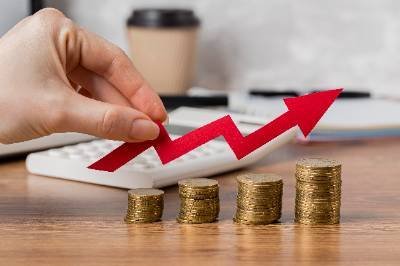What is Return on Investment (ROI)?
What is Return on Investment ( ROI )? How is it calculated? And why is ROI crucial to your business? This information is helpful for many sales professionals. Because with its help, they can give correct information about ROI to their distributors or stockists. And if it is less or more than their expectations, then they will be able to take appropriate action. The full form of ROI is the return on investment. That is, how much return a businessman earns from his business in return for his investment; it is also the health report of a business. Understand it like this: doing business is right for someone only if the profit from their business is more than the interest they get on the money deposited in the bank. Usually, a bank does not get more than 6 to 8% interest in a year or a maximum of 0.67 per month on FDS savings. So if the profit of your business is more than this, then your business is profitable. Now, the percentage of a healthy return on investment can be a part of every business. Now, understand how to calculate the return on investment.
How to calculate Return On Investment (ROI)
Now, let us understand how to calculate the return on investment. Its formula is profit divided by investment multiplied by 100. Profit means total income minus total expenses. So there are mainly three factors: income, expenses, and investment.
1. Income: Let us understand where the income comes from. Income means the turnover into profit or margin. If your monthly turnover is $1000000 and your profit margin is 4%, then the income will be $1000000 with a 4% margin, equal to $40000. So, the monthly income of that business is $400,000. Sometimes, in some companies, a monthly commission or bonus is also given for target achievement. So we will also add that to the income. But for the sake of explaining, we will include only the profit margin. This calculation is easy to understand. To start this income, the businessman has to incur some expenses. So we will add that to the expenses. Now let’s know what the outlay is. Salary comes first in expenses. Salary includes your salesman’s salary, office staff’s, delivery man’s, or driver’s. That means the salary of any staff working for you in the office will be included. Sometimes the company gives salesmen subsidies to the channel partners. So, in that condition, we will only take the salary of the rest of the staff; we will not consider the salesman’s salary because it is already being given by his company.
2. Establishment (Expense): Establishment includes office rent, godown rent, electricity, stationery, internet, and other expenses. Then comes the delivery cost. If the stock goes on the market, it will have outlays like fuel, vehicle management, servicing, and annual insurance. If the vehicle runs on the market, then it will also depreciate year after year, and that cost will also be included in it. Apart from this, if there are costs like bank charges, sometimes companies do RTGS or NEFT to the company, then its charges are from the bank; we include that too. Some expenses are market-related, like cash discounts; we will also include them. Now, while calculating the outlays, you should pay attention to how much the outlays of your business are and how much is in other trading. Let’s understand it this way: if a distributor operates for many companies, then we should calculate only that much expense, which is the share of your business in their entire business. For example, if the expense of the whole business is $100,000 and the share of your business is 30%, then your actual expense is $3000 because the 70% share is being spent on other businesses. Because office, salary, and establishment are also shared with other companies, we often do not pay attention to this while calculating ROI. And its calculation goes wrong.
3. Investment: The third component is investment. In investment, the distributor or stockist should have sufficient stock to give on credit in the market, meaning that to operate the business, stock has to be given on credit. So we also include that credit. If any claim that is to be received from the company is pending, then it will fall under the category of investment. If the company has any security deposit, it will also be counted as an investment. If the company is giving its interest to the distributor or channel partner, we will not include it in the investment. Sometimes there is also a credit balance lying on the depot, or CFA. That will also be counted as an investment. But if the billing to the distributor is in credit, then we will not include it in the investment. Then, to get the ROI of the business, we subtract the total expenditure from the total income, divide by the total investment, and multiply by 100. or we get the ROI of the business. Now the question arises: who should be the healthy ROI of the trade? So you understand this way? If the interest rate of a bank FD is 2 to 3 times the business’s ROI, then the distributor or channel partner is earning a good ROI. That is why we consider 24% ROI in FMCG to be a healthy ROI.

ROI Calculation Formula and Example
Let's say you invested $ 50,000 in a marketing campaign that generated $ 80,000 in additional revenue. The total expenses for the campaign were $ 20,000. Using these values, you can calculate the ROI -
NetProfit=TotalRevenue−TotalExpenses
Net Profit = $ 80,000 - $ 20,000 = $ 60,000
ROI=(50,00060,000)×100
ROI = 120 %
In this example, the ROI is 120%, indicating that for every dollar invested, there was a return of $ 1.20.